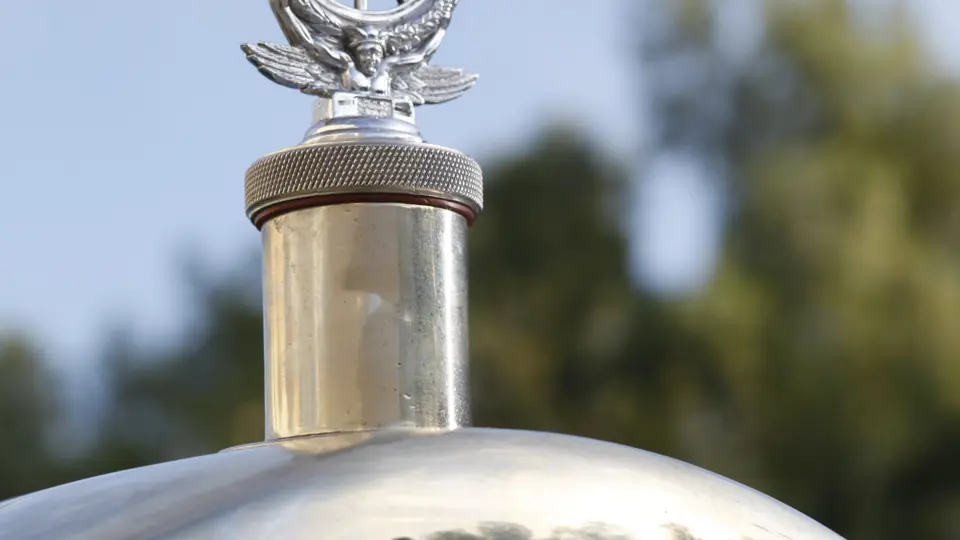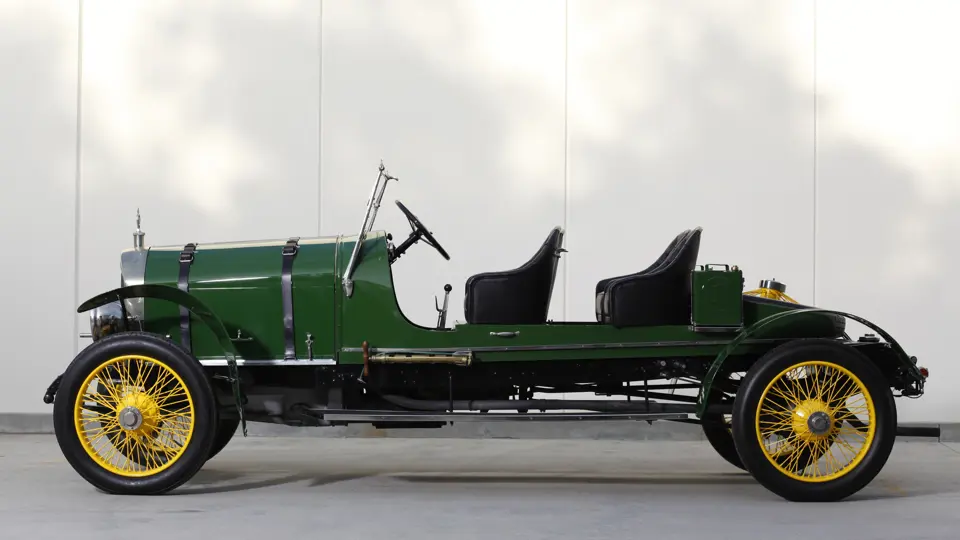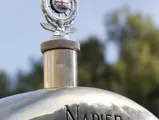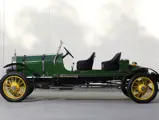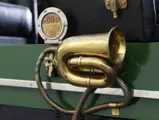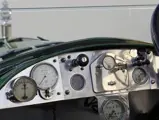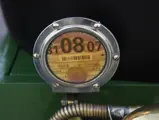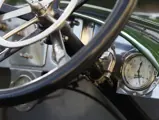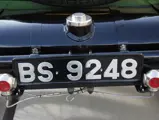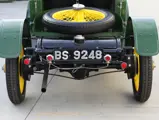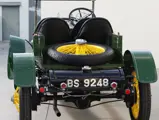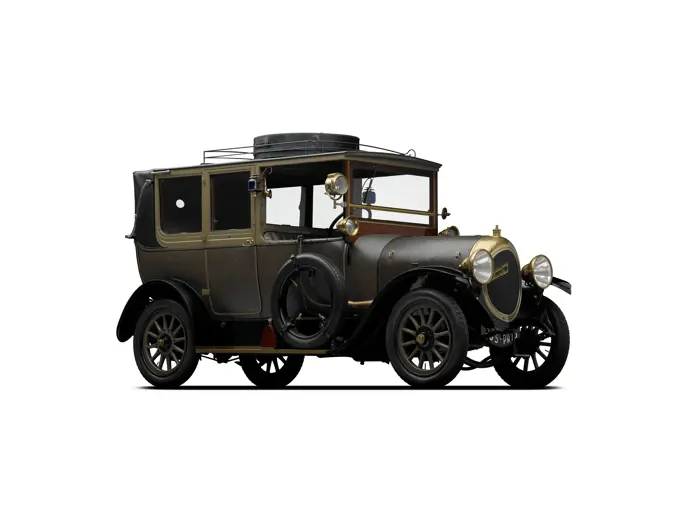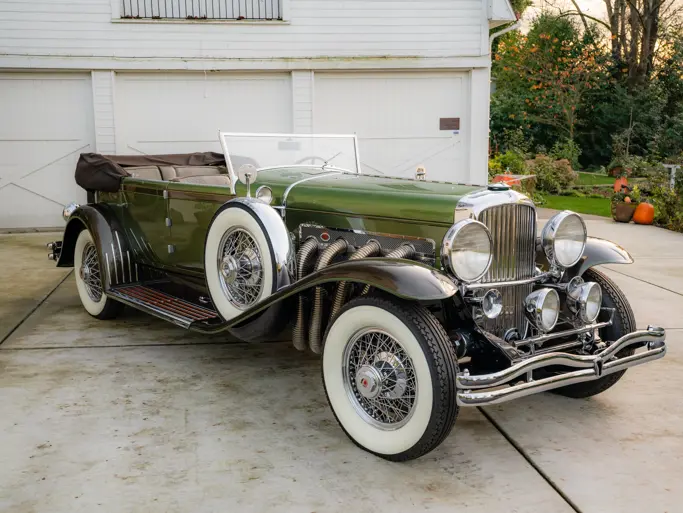82 bhp, 6,175 cc OHC inline six-cylinder engine, manual transmission, solid front axle with semi-elliptic leaf springs, live rear axle with platform rear suspension, and two-wheel mechanical brakes. Wheelbase: 126"
• Rare prestige British marque
• Dashing four-place speedster
• Ideal for trials or vintage racing
• One of only 120 cars built in five years of production
Montague Stanley Napier entered the automobile business in 1898. His first product was a vertical-twin engine with coil ignition, built for his friend Selwyn Francis Edge. For more than a decade he was Napier’s sole distributor and promoter, and one of their best customers was telephone magnate Charles Jasper Glidden of Massachusetts, who carried the Napier name on a series of long-distance tours, one of which became the series carrying his name.
In 1904 Napier achieved the distinction of producing the world’s first commercially-viable six-cylinder engine. A five-liter car with mechanical overhead intake valves, it soon spawned a 15-liter racing version. In 1908 came a five-liter L-head six with three-speed gearbox and shaft drive. The First World War turned the company’s attention to aero engines, particularly the Napier “Lion,” which became renowned in automotive circles as the powerplant for a succession of land-speed record cars. Edge departed the company in 1912, so the postwar activities were muted.
Following the war, a one-model policy was adopted. The T75 had a single-overhead-cam six-cylinder monobloc aluminum engine with steel cylinder liners and dual ignition. As expensive as a Silver Ghost, it rivaled Rolls-Royce quality but was less well known. Just 120 were built between 1919 and 1924. Though four-wheel brakes and balloon tires were adopted, the firm ceased manufacturing that year, and later attempts at resuscitation were unsuccessful.
This Napier T75 was found in South Africa, where it had been used in hot air balloon recovery service. Now bodied as a four-place Gentleman’s Roadster, or more specifically a “four-place speedster,” it is long, lithe and low and is nicely fashioned and finished to a high quality standard. Although showing some age, the car is nicely detailed in British Racing Green with black leather seating. In addition to the typical instrumentation, the aluminum dashboard features a Tapley gradient meter, hinting that trials and vintage racing may be its forte.

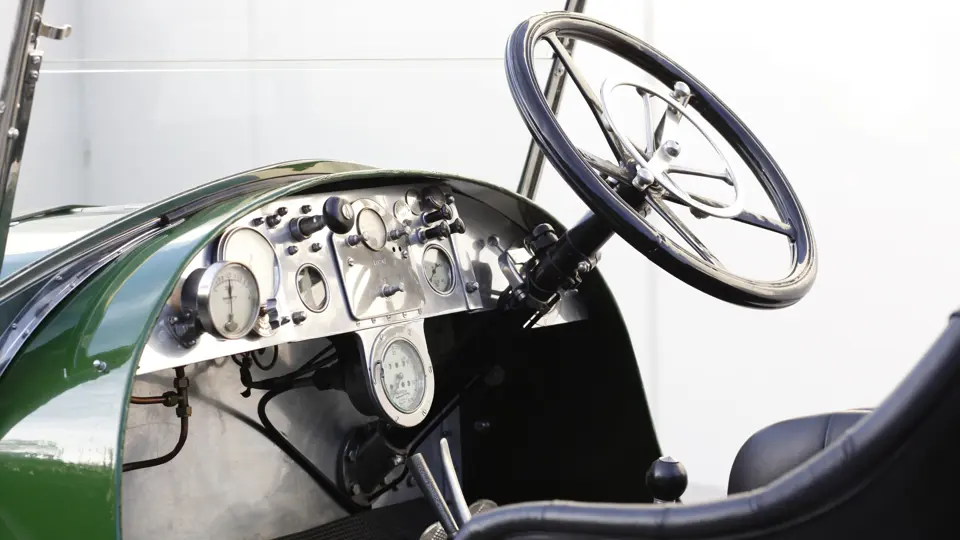
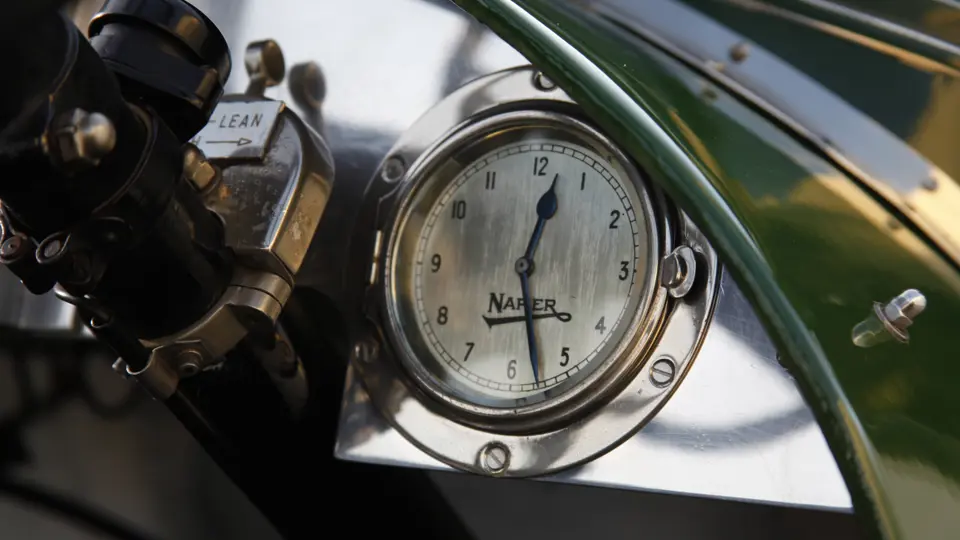

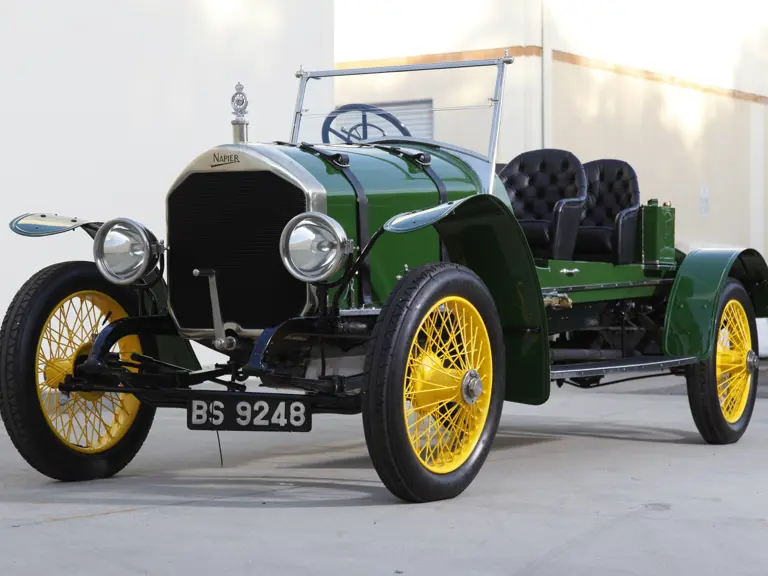
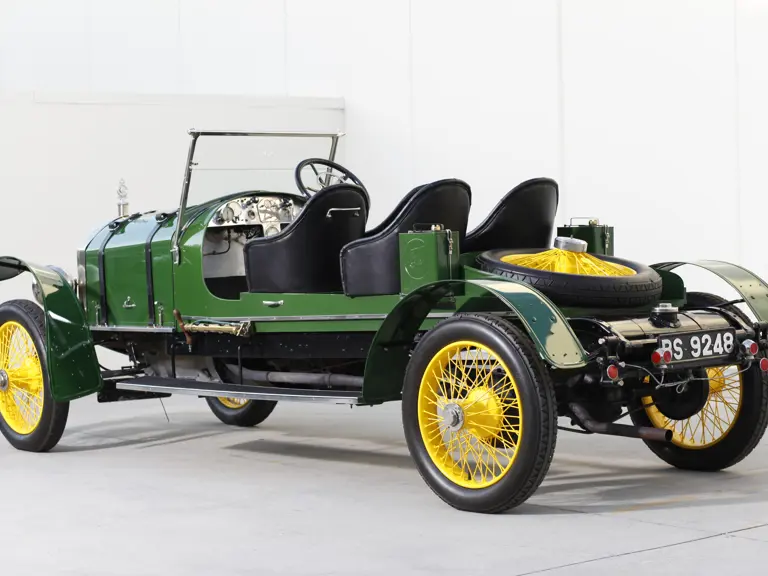
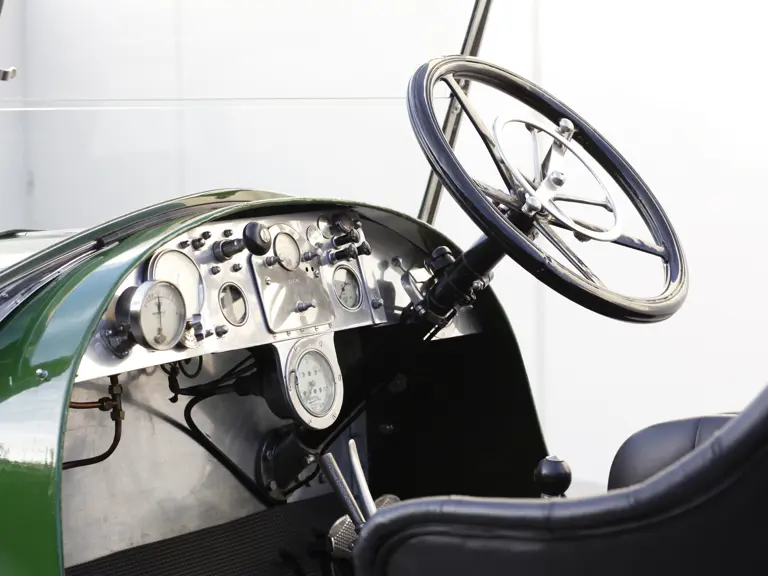
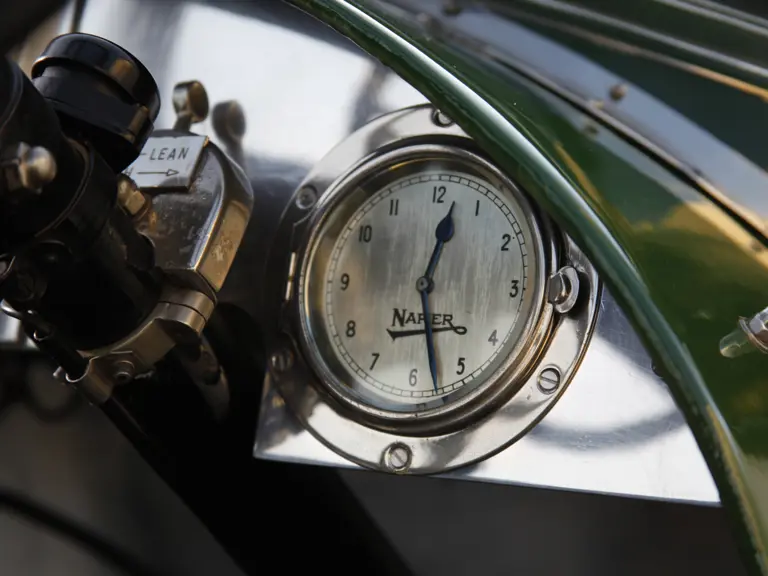
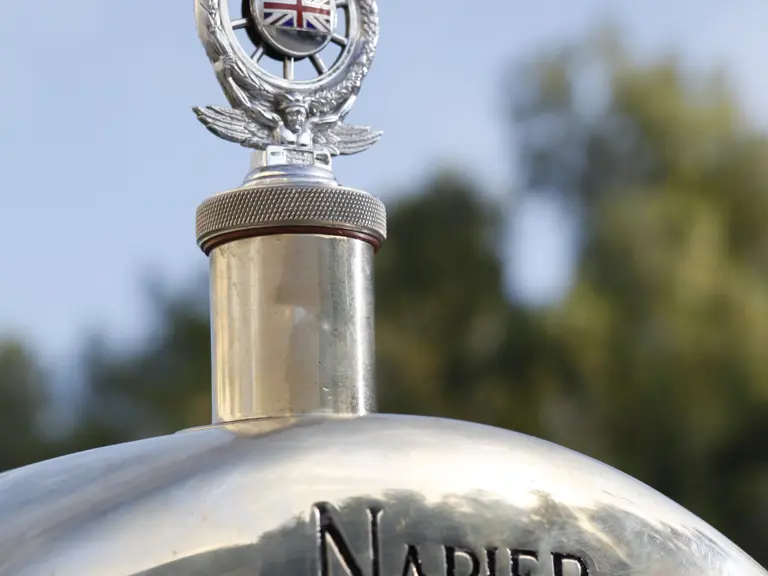
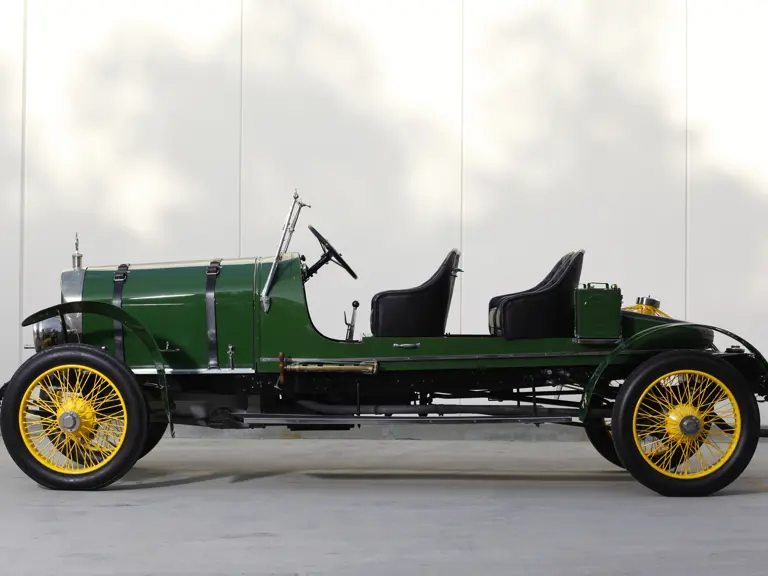
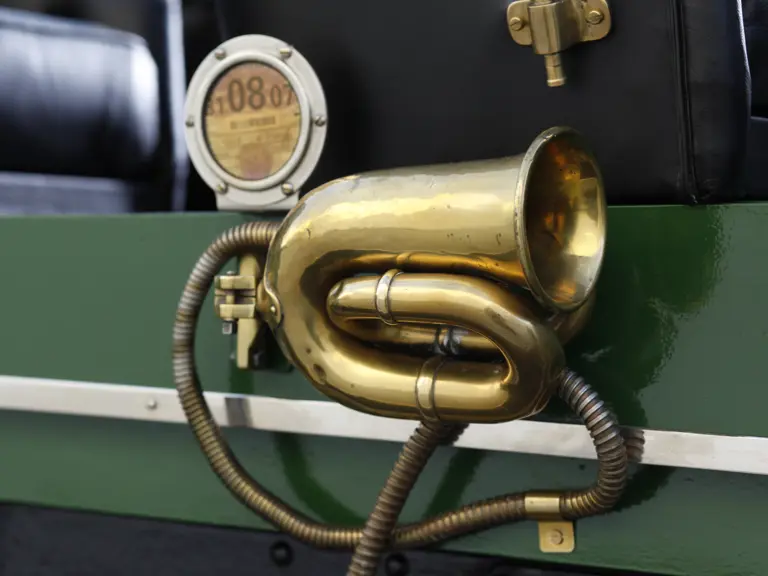

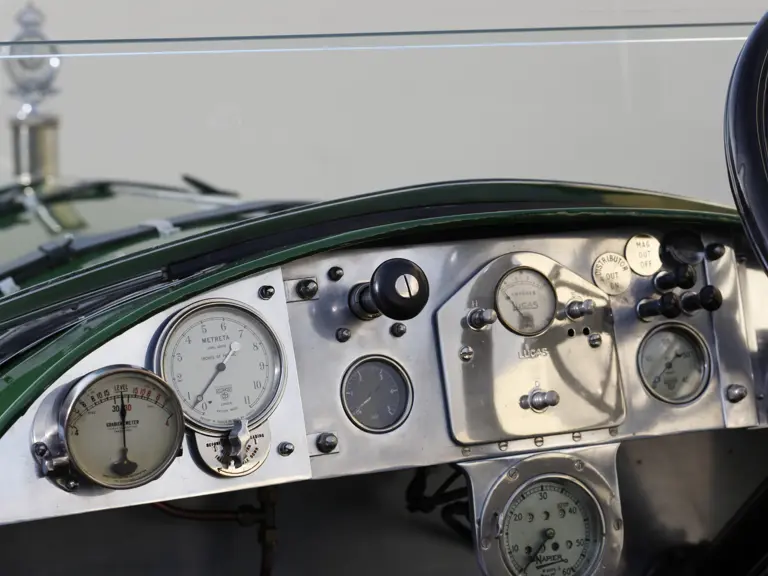
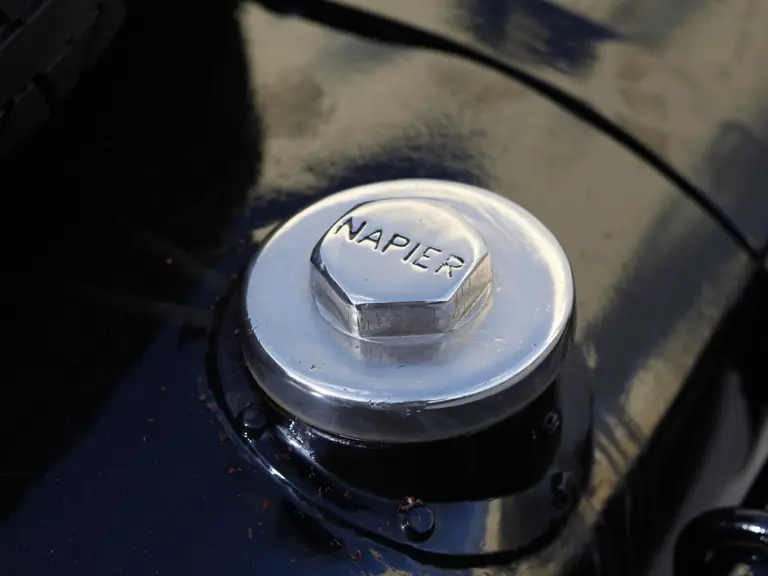
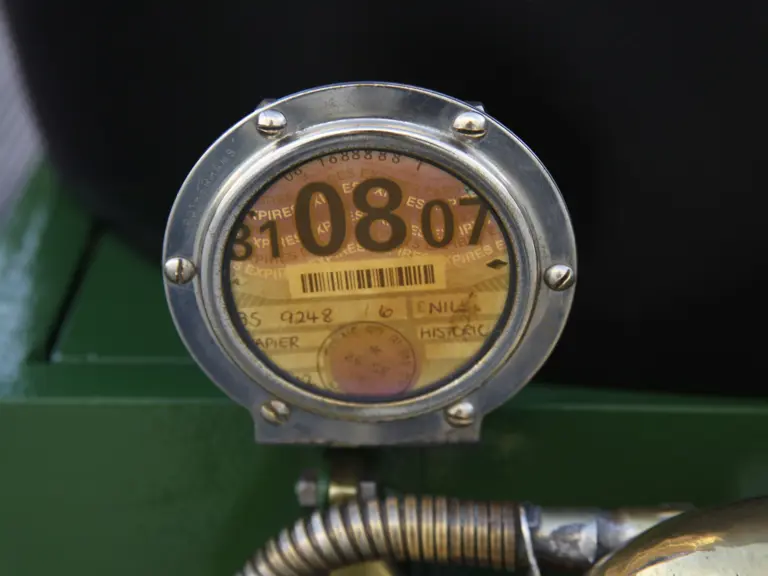
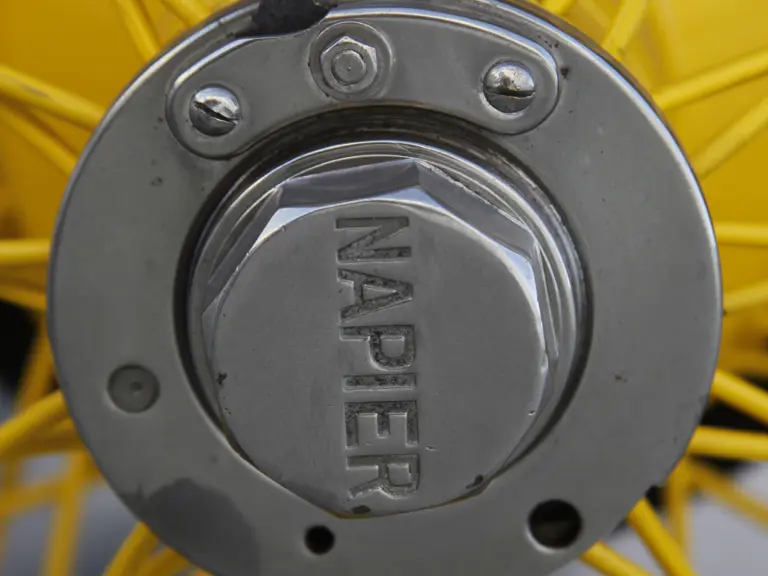
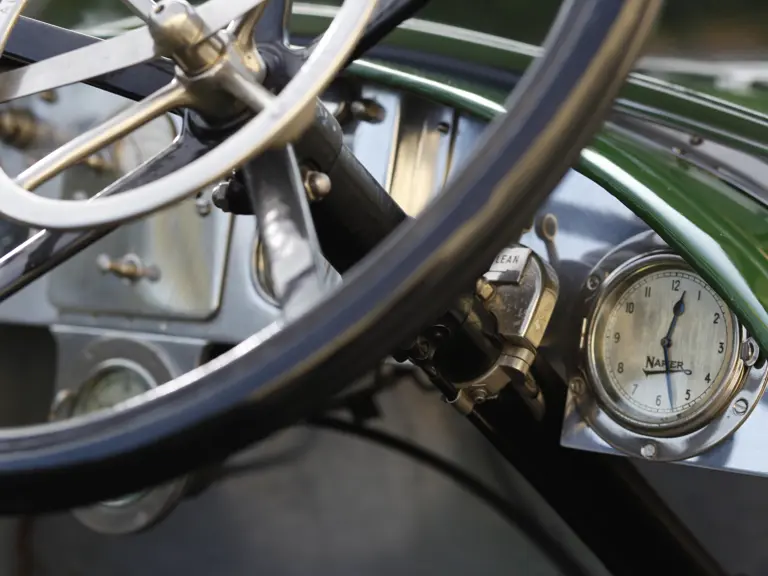
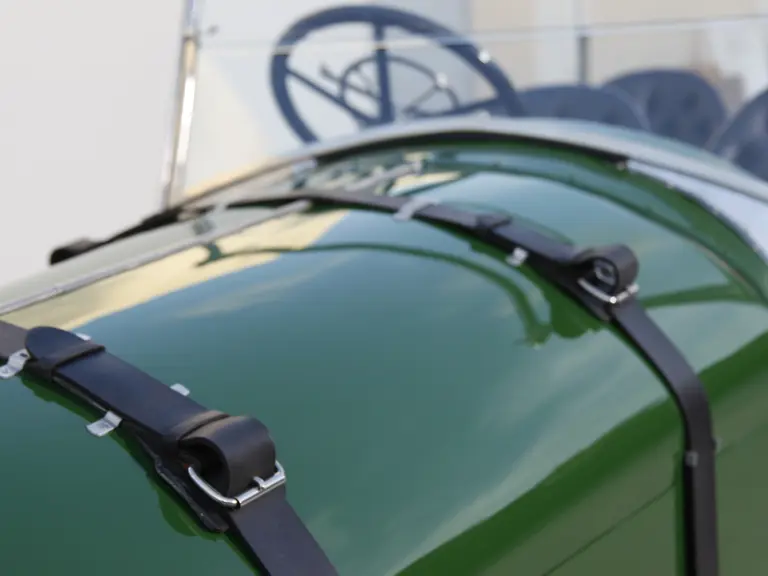
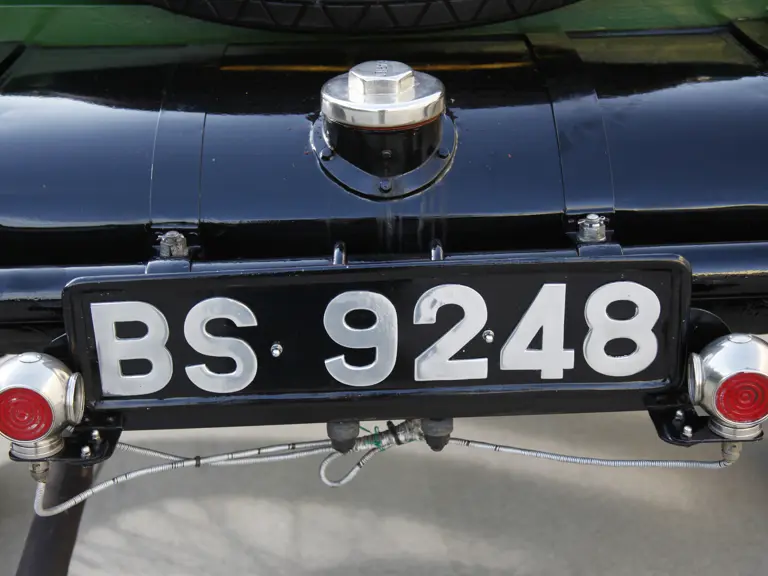
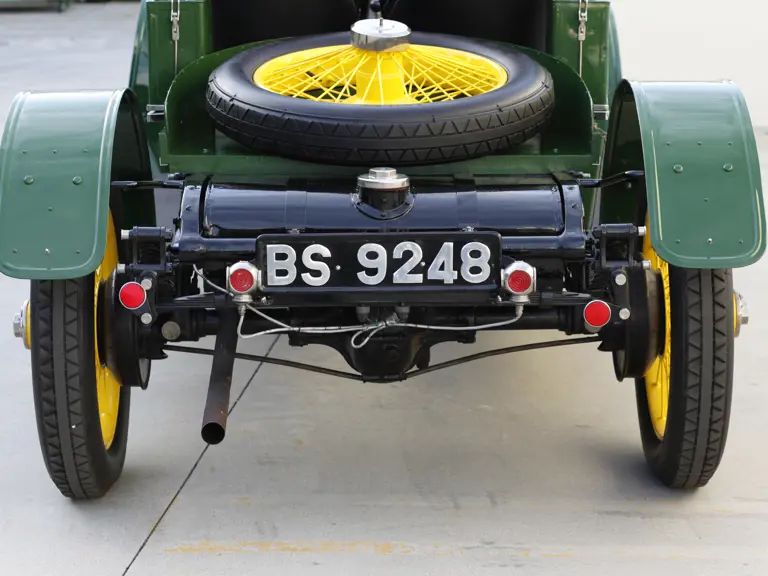

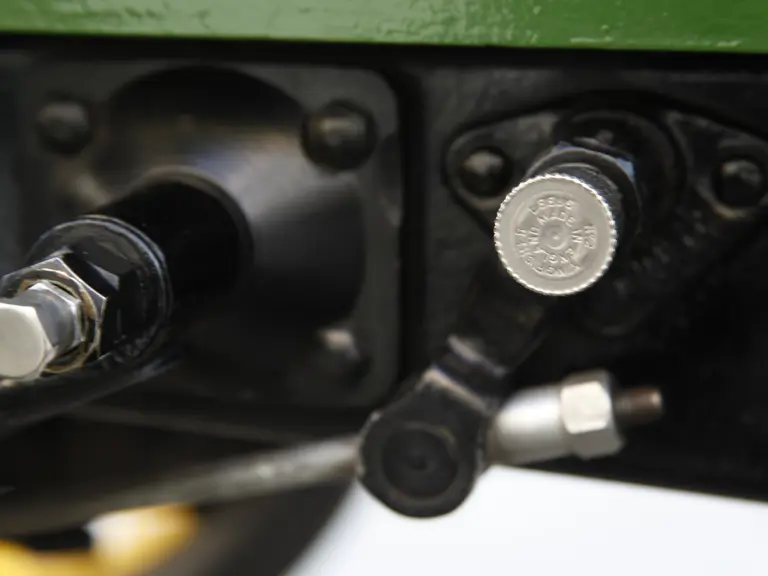
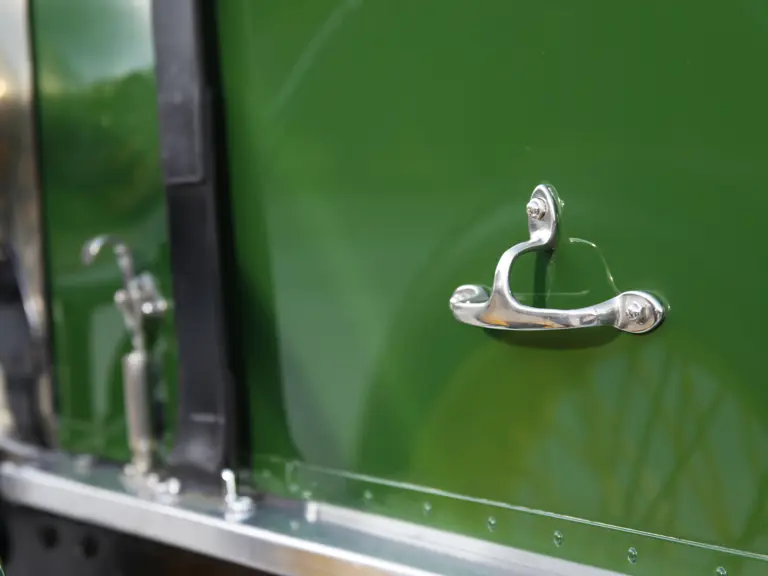
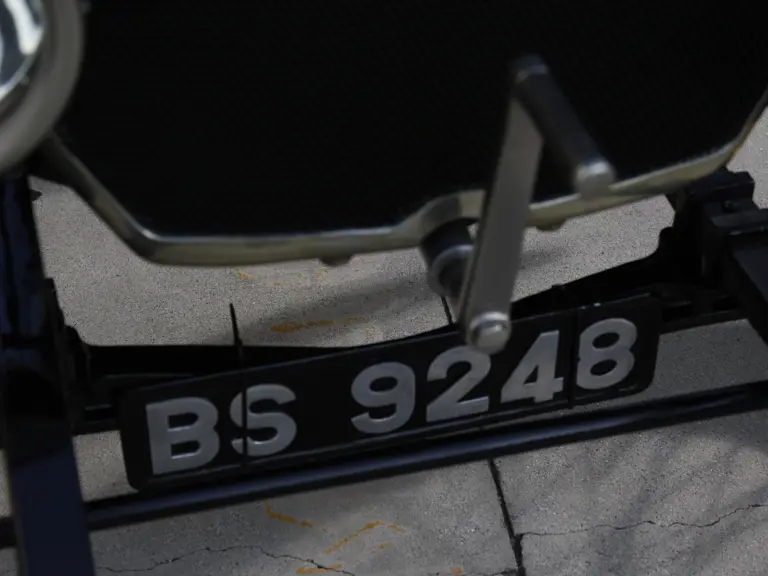
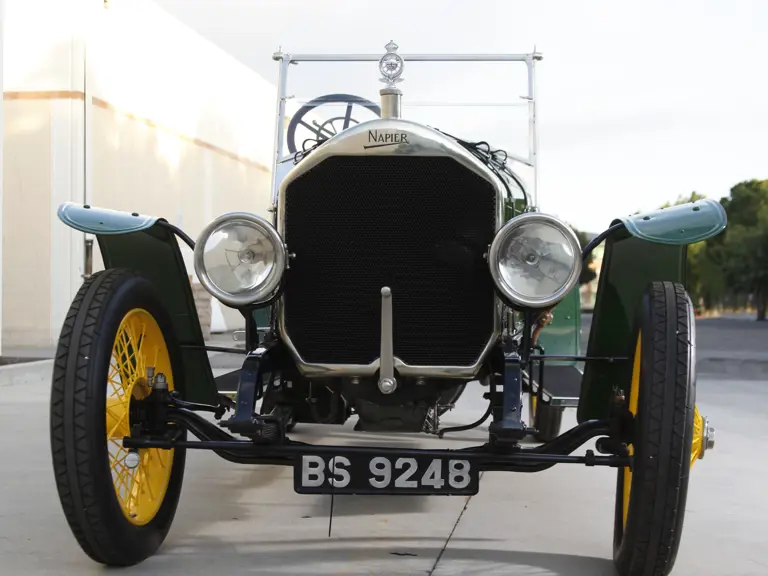

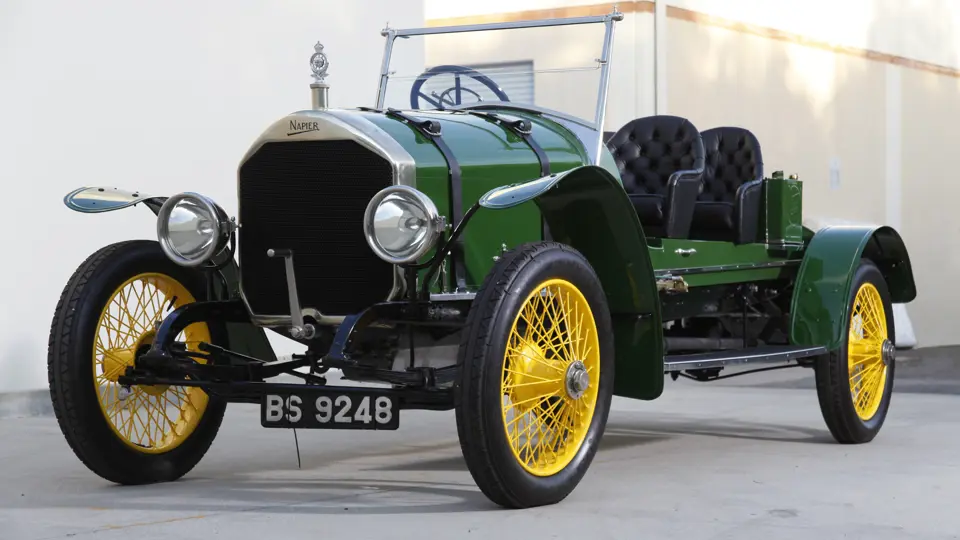
 | Amelia Island, Florida
| Amelia Island, Florida
